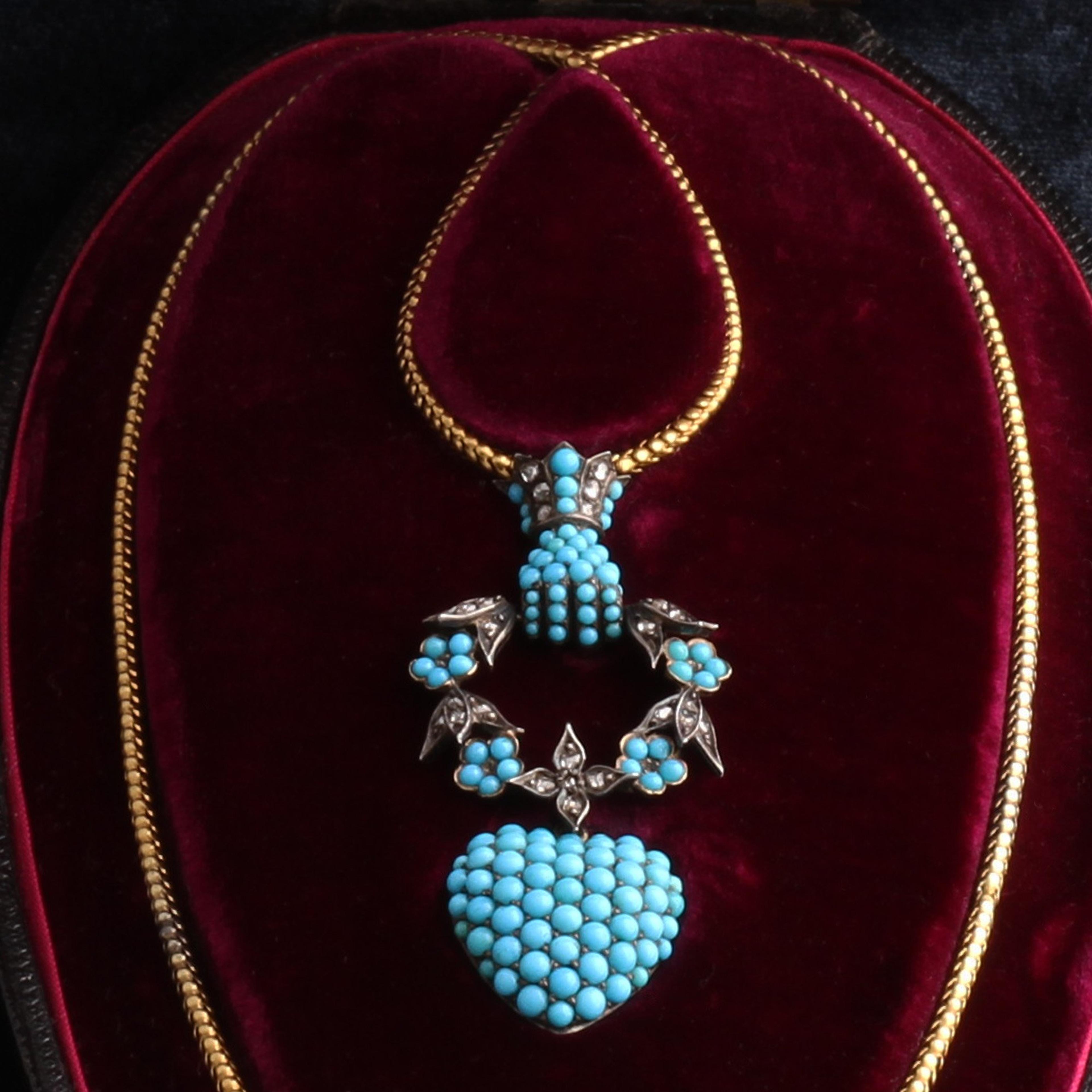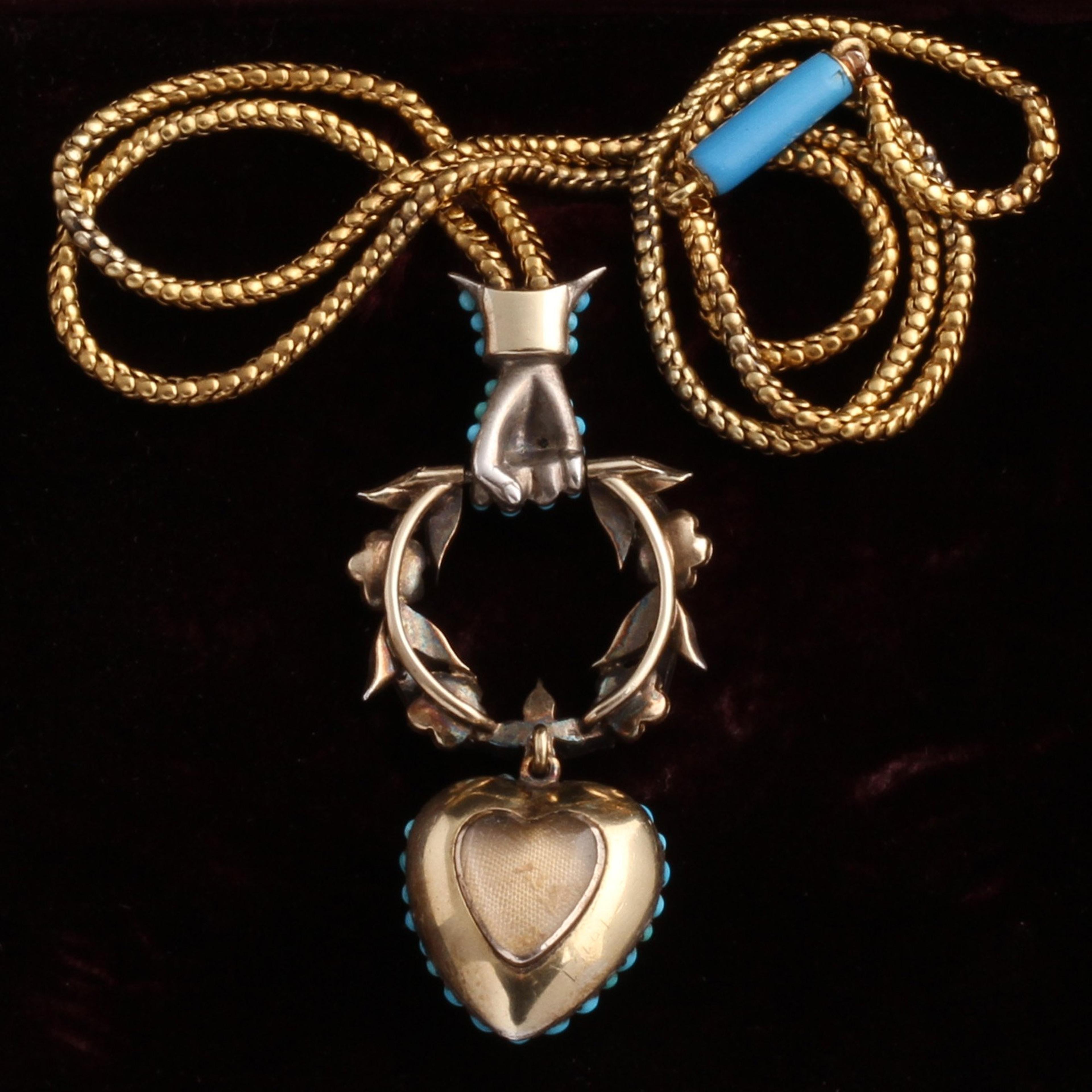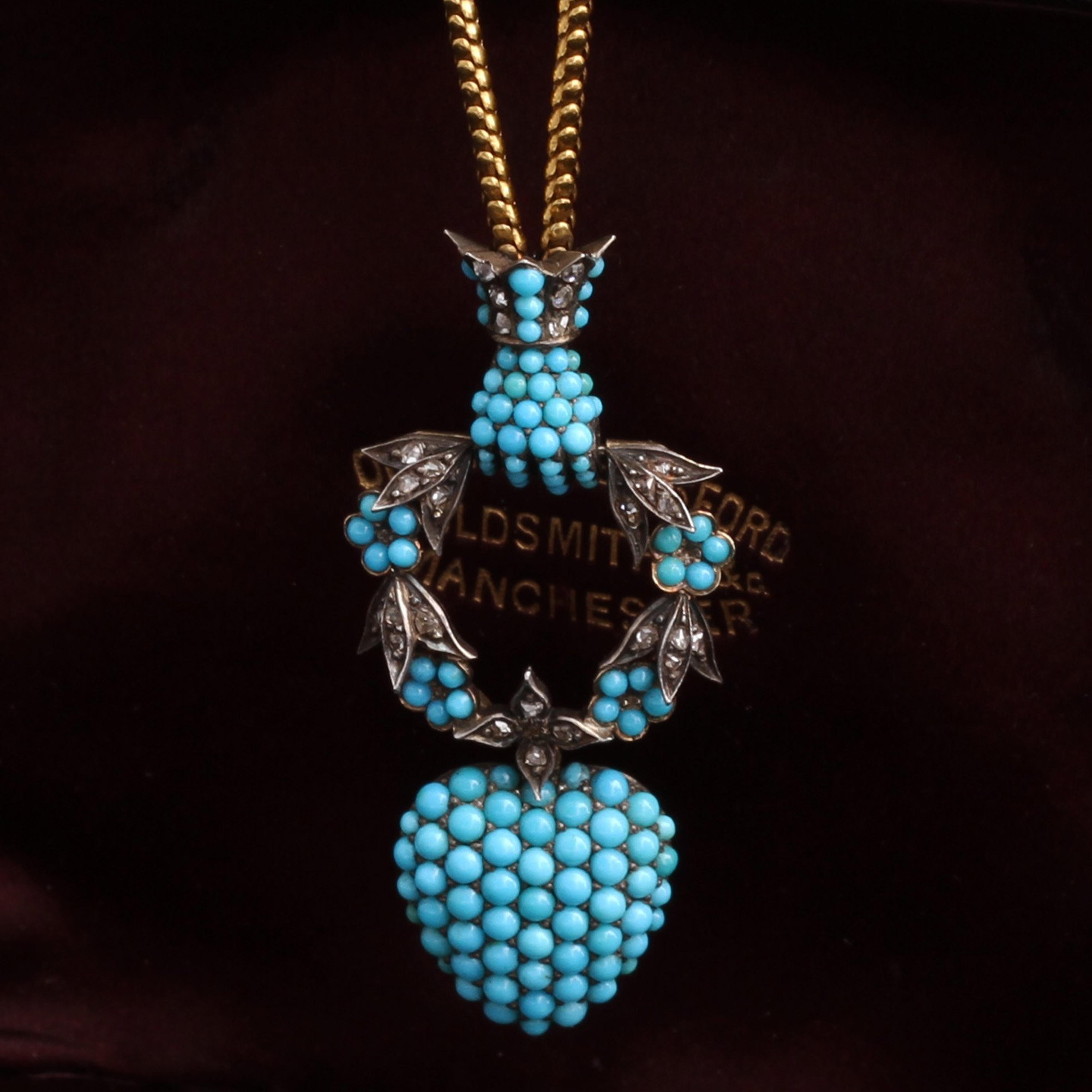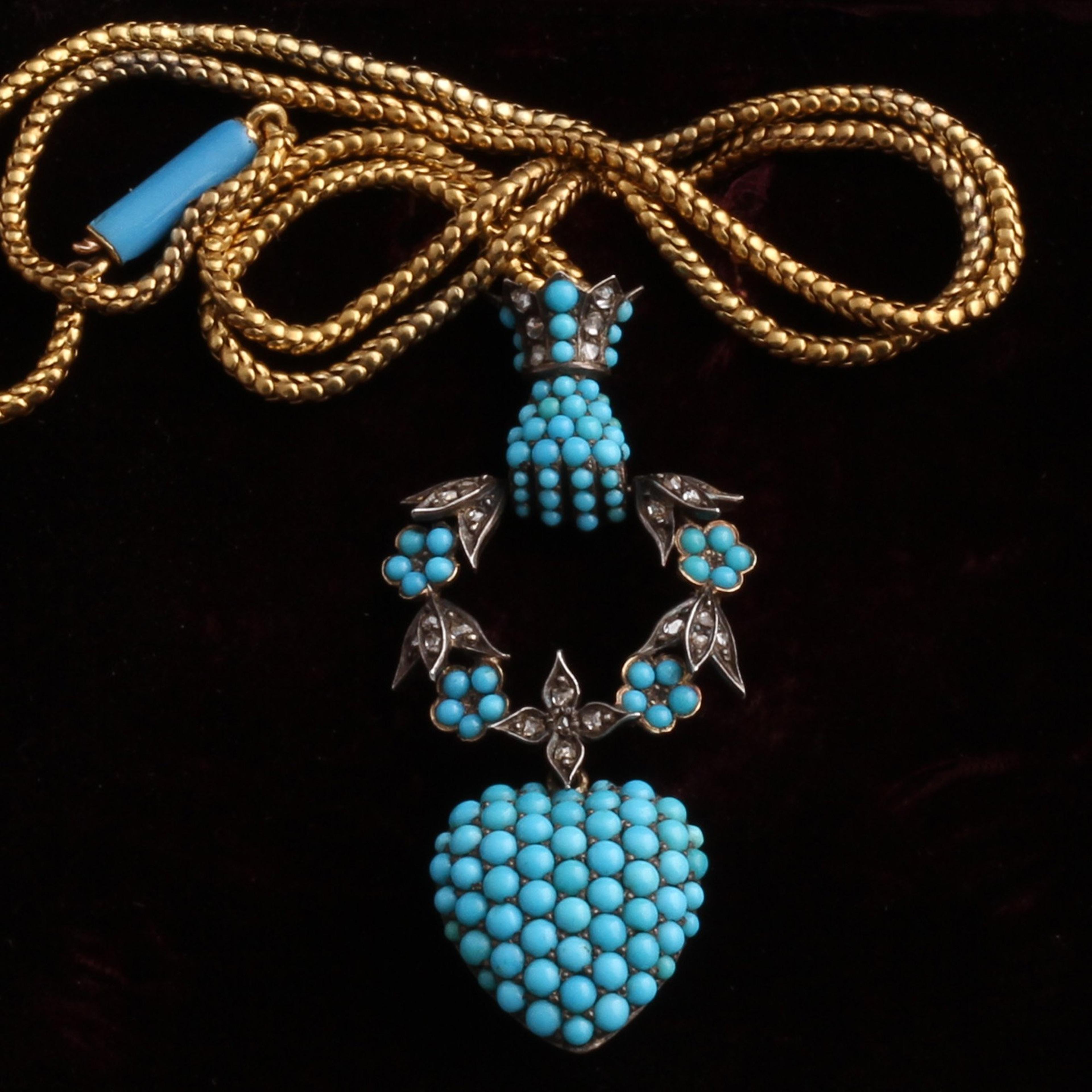In early Islamic culture, turquoise was regarded as a sacred stone, prominently displayed in symbols of power and opulence. Once Eurasian trade routes evolved and the gem reached Europe, Westerners fell for for its sky blue color and exotic allure. In fact, the word "turquoise" is derived from the French pierre turque ("Turkish stone") which lends credence to the widely held belief that the stone was first brought to the Western world by the Turks in the 13th century. This sensational early Victorian necklace features a beautifully modeled cuffed hand grasping a wreath of forget me nots and a heart-shaped locket all studded in bright turquoise cabochons and flinty rose cut diamonds. The pendant is suspended from a substantial 18k gold chain and finished with a blue enamel clasp. This stunning and near immaculate piece comes in its original fitted box.
thedetails
- Materials
18k yellow gold, silver, 27 rose cut diamonds, turquoise cabochons
- Age
c. 1840
- Condition
Excellent - one small chip to the enameled clasp but otherwise immaculate
- Size
Pendant measures 1 5/8" long and 3/4" at the widest point, 15 1/2" chain
Need more photos?
Send us an email to request photos of this piece on a model.
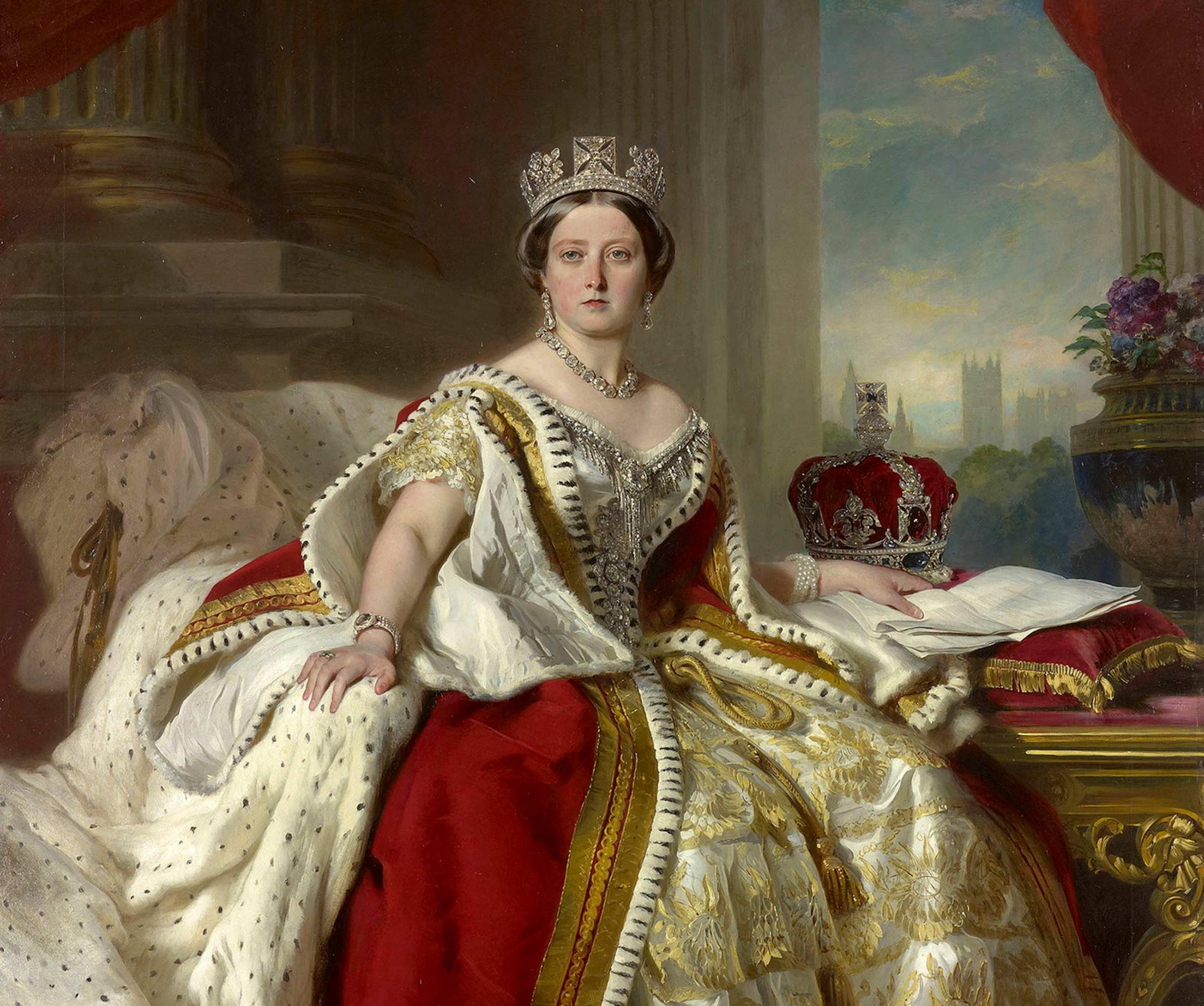
Aboutthe
VictorianEra
1837 — 1901
The Victorians were avid consumers and novelty-seekers, especially when it came to fashion, and numerous fads came and went throughout the 19th century. In jewelry, whatever fashion choices Queen V. made reverberated throughout the kingdom. The Romantic period reflected the queen’s legendary love for her husband, Albert.
Jewelry from this period featured joyful designs like flowers, hearts, and birds, all which often had symbolic meaning. The queen’s betrothal ring was made in the shape of a snake, which stood for love, fidelity, and eternity. The exuberant tone shifted after Prince Albert passed away in 1861, marking the beginning of the Grand Period. Black jewelry became de rigeur as the Queen and her subjects entered “mourning,” which at the time represented not just an emotional state, as we conceive of it today, but a specific manner of conduct and dress. She wore the color black for the remainder of her life, and we see lots of black onyx, enamel, jet, and gutta percha in the jewelry from this time. Finally, during the late Victorian period, which transitioned along with a rapidly changing world into the “Aesthetic Movement”, there was a return to organic and whimsical motifs: serpents, crescent moons, animals, and Japonaisserie designed for the more liberated “Gibson Girl”. During the second half of the 19th century, America entered the global jewelry market, with Tiffany and Co. leading the way. Lapidaries continued to perfect their techniques, and the old European cut emerged toward the end of the Victorian period. The discovery of rich diamond mines in South Africa made the colorless stones more accessible than ever before.
